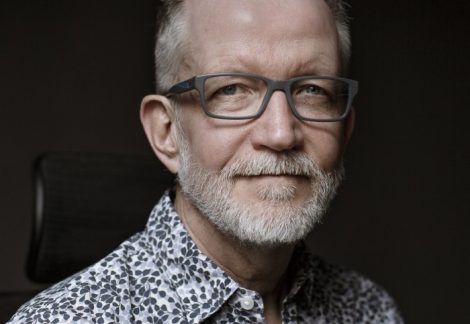Photographer Peter Searle has photographed the most influential people in British society, including Prime Ministers, global CEOs, film directors, artists and actors. His in situ portraits capture their subjects in their natural surroundings: actors in theatres, architects in their buildings, CEOs in their offices. His pictures uniquely capture the essence of the person they portray.

So when Peter agreed to photograph our Readywear campaign for 2018, we knew we were in good hands. He has taken seven portraits of our creative peers and friends, including milliner Flora McLean and artist Pete Fowler.
We met with Peter to talk about his career, his favourite subjects, and of course, his own uniform.
Hi Peter! Let’s start with an obvious one… how did you get into photography?
Good question! I didn’t start off doing photography or anything ‘arty’. I went to university and studied psychology and philosophy which was a last minute choice. I got kicked out after a year. I ended up doing all kinds of jobs: I lived in Australia, working as a maintenance man in an outback motel; I was a geologist’s assistant; a North Sea driller for a while. It wasn’t until I was in my mid twenties that somebody suggested I try photography. I’d never even thought about it before, but I went back to art college as a mature student at 29.
I ended up as a picture researcher and picture editor. I got into internet projects on the management side, but when I ran out of contracts, I thought, ‘you’ve trained as a photographer, that’s what you should do!’ I got a loan, bought some equipment, bought a computer, put a portfolio together, then called people up and tried to get work.

Which photographers inspire your portraits? Who do you admire?
My influences are quite disparate, but you’d probably see more of a connection with my favourite photographer, Arnold Newman. Newman was a contemporary of Yousef Carsh, another photographer I’m heavily influenced by. My work tends to be portraits that are environmental, but I like the way that Newman uses geometry in his pictures; they have a certain wit about them. In terms of current photographers, I really like the work of Magnum photographer Alec Soth. He has a different way of seeing things.
Can you talk us through how you prepare for a shoot?
Well, a magazine will call me with a commission, to photograph somebody anywhere in the world, mostly in the UK and usually in London. They’ll give me a bit of background about the article, which may affect the way I photograph. Usually I know the magazine if it’s an existing client, so I know where the images will appear. I’ll think about the location. Sometimes you look at a building on street view, for example a horrible 1980s behemoth with tinted windows, and you think ‘this is going to be a nightmare!” A lot of the mundane stuff is finding out what the subject looks like, what the location might look like, and then thinking about how that fits with the tone of the article.
I might have a brief that is about keeping it simple with natural light; a gentle approach. Or, it might be a more complex shoot that requires more equipment: a bit like Readywear, where we need background stands and we’re shooting video at the same time.
A lot of your portraits see the subjects photographed in their natural, busy environments. How do you make them stand out?
I guess that’s a technical question – the first and most obvious one would be depth of field. You’d have a shallow depth of field, if you’re using artificial light you can light them so they stand out. I might dull the background down so the lights lift the subject; but you have to design that because you don’t want you subject appearing overexposed. It depends on natural light and what you’re working with on the day.
For example, with Gareth Scourfield’s photograph, the nicest angle was the opposite to the one we used. We couldn’t shoot with the lights we had because they weren’t strong enough to counteract daylight. Looking the other way was great in terms of architecture, but the available light was falling the other way. You have to think on your feet.
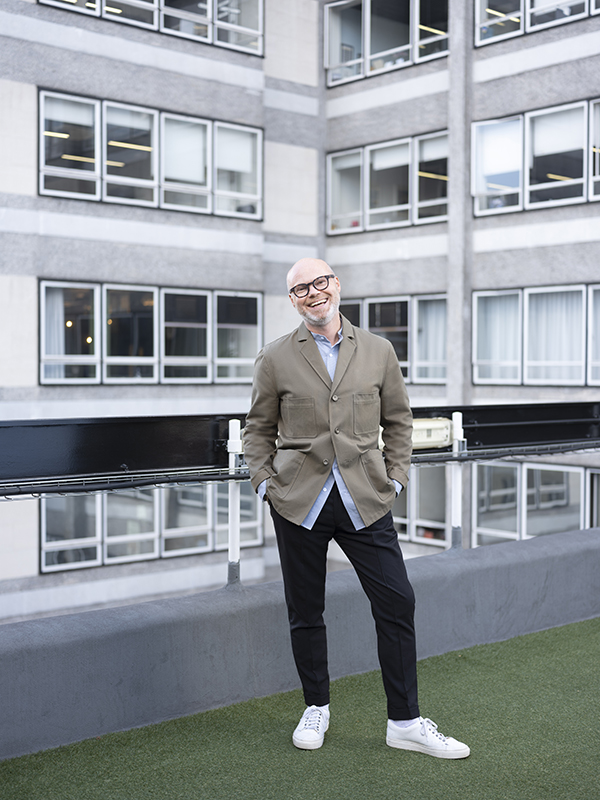
There is a trend at the moment in fashion advertising to photograph real subjects in real locations?
Yes, there is, you get a lot of this style of photography. But there area lot of photographers out there that don’t have a natural look, which uses available light. For me, it’s about using controlled light and using the environment: you’re saying this is the place where you would find this person. My work has an editorial look, but I still light it to look like a painting. It’s more like a painter would do. A good example would be Pete Fowler’s image, the artist in his studio. It looks more like a painting. It looks like available light: in actual fact it’s flash, but you can’t really tell.
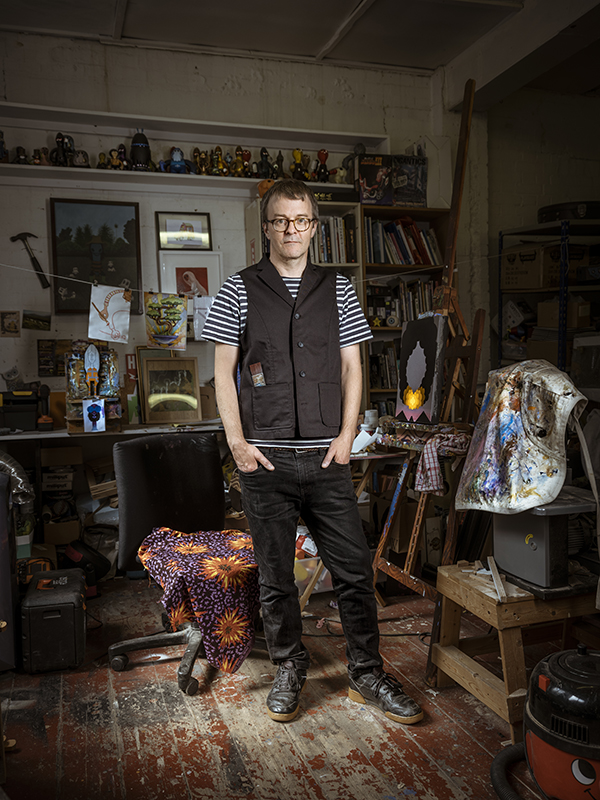
So the Readywear shoot went well? Are you pleased with the results?
Yes! It was an interesting set of circumstances, the way it evolved. Of course, on the day things are never how you expect them to be. For example, with Hugh and Catrina: if you’re going to photograph a building, you can guarantee the sun will be in the wrong place. If you have time to think ahead, you can even plan for the light, but you can’t always afford to do that.
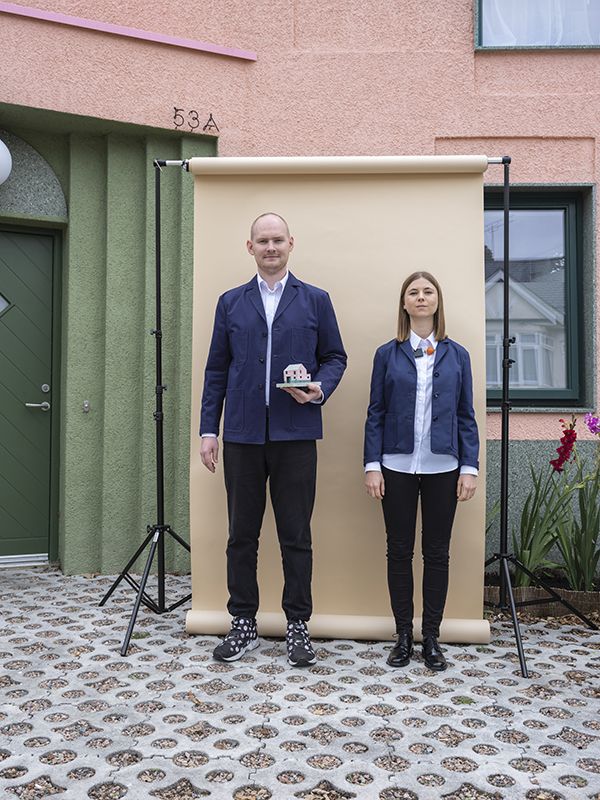
I think the shoot went really well considering how tight some of the spaces were. At Soho Radio, one of the studios is in the background, and we had to take those pictures half way out the front door! It was so tight and they had a lot of people coming and going. Then we did the video, and people didn’t really realise we were shooting footage, so they’d pop their heads around the corner and say ‘is it alright if we come through now?!’
Again with Hugh and Catrina, we had to put the tripod in the middle of the road, and move out of the way every time a car came. That was tricky. And being outdoors was hard to use the Colorama background because the slightest breeze meant it went all over the place. The only thing I would change would be: I might have gone back in the afternoon for better light.
And how were our subjects? Did they behave?
The subjects were fantastic! And they were fantastic because they are all creatives; they just get it. None of them were precious about how they looked, even though we were obviously going to make them look good. They were great to work with and very self-efacing. They were definitely not Madonnas.
What are you thoughts on Readywear itself?
I love it! And I’m not the only one: a lot of the subjects were saying, ‘can I keep this?!’ I’m not surprised it’s getting a lot of attention on Instagram. I love the utility jacket, I wouldn’t mind one myself!
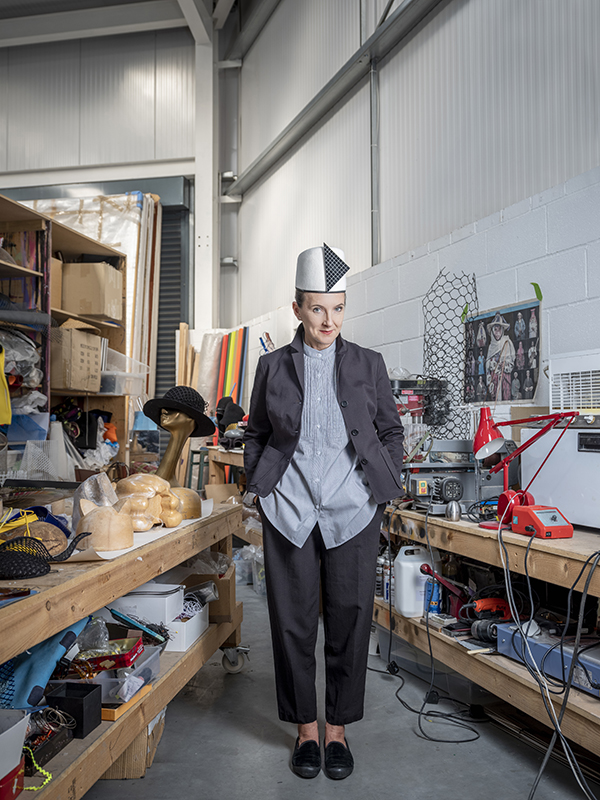
What is your personal uniform?
I almost always wear jeans, or climbing trousers because they’re not scruffy, and I have a penchant for floral shirts; my partner Wendy is always saying I should buy more shirts like that!
Do you alter how you dress in different circumstances?
For me, a lot of my work is in corporate settings, even if it is editorial. Being a photographer, you have permission to be as scruffy as you like, because everybody expects it! I like that; you sometimes get photographers who dress up and wear suits, but I wouldn’t do that in a million years. If you’re wearing a suit, it means you’re a different kind of photographer altogether. The uniform of a creative photographer is not a suit.
I might be photographing the CEO of a huge multi-national or investment bank, but they’ll feel better if they’ve got a real creative looking after them. If I was being photographed by somebody in a suit, I wouldn’t have much confidence in the pictures because I wouldn’t think they’d be interesting. In photography you’re almost expected to be scruffy, but there’s still a uniform. It’s almost a statement saying ‘Im not wearing a uniform’ which actually means you are!
You’ve photographed so many people, from CEOs to Prime Ministers…
Yes, I photographed Gordon Brown when he was Prime Minister. I photographed David Cameron when he was in opposition and Nick Clegg when he was deputy.
Who’s been the nicest or naughtiest?
There have been so many really nice ones. All of the artists have been brilliant. Lord Parekh was really nice and even gave me a tour of Lords and Parliament when I was there.
An interesting one was Andrea Bocelli. He was one of the funnier ones. It was for Classic FM Magazine and we photographed him in his house in Piza. I was a bit worried because as he’s blind and couldn’t speak much English (at the time), it could be hard to give him direction. We were also warned that he loses interest quickly, so we had to keep him abreast of what was happening. Then he started to quote Dante in Italian, speaking a lot, which made him impossible to photograph. Then he got his flute out, because he loves playing the flute, but his management insisted they didn’t want this in the photograph. Then, as we were moving things around, my assistant bumped into one of the bits of equipment. There was a big flash of light and the stand fell down, everything began collapsing in a Monty Python-esque fashion. And then Bocelli giggled and said, ‘it’s all going to s**t!’
So, it turned out he could speak some English.
Finally, what advice would you give to photography students or budding photographers?
I’d say always try your best to be different, to develop your own style. Always ask yourself, ‘could someone distinguish this as my work if they weren’t told?’ What is more boring than looking at art and thinking that could be any one of a million artists? A case in point is one of the subjects, Grayson Perry. You can always spot his work a mile off.

To see the full Readywear campaign, click here.

